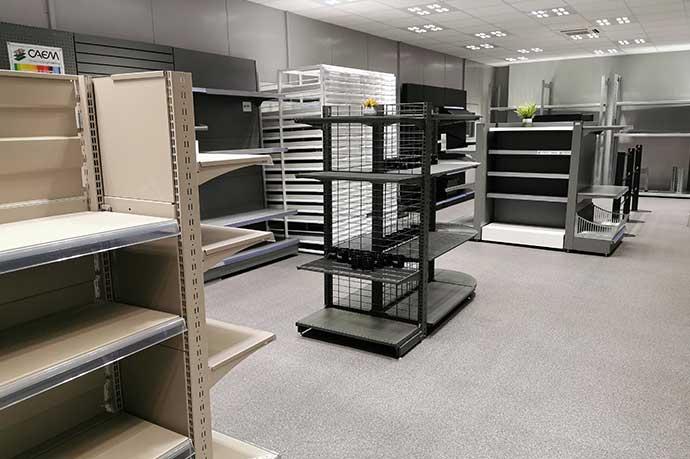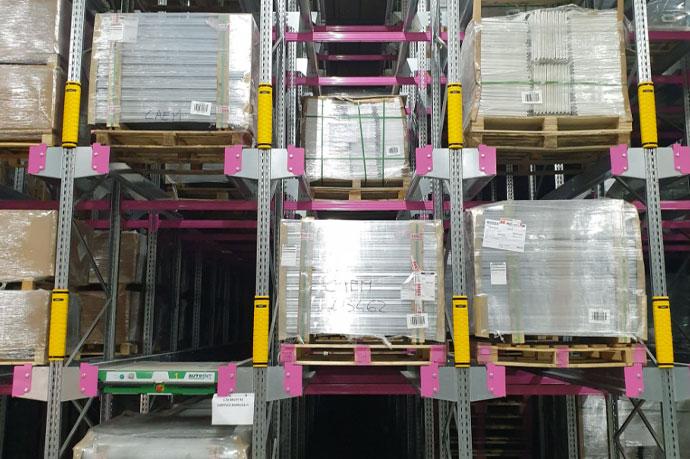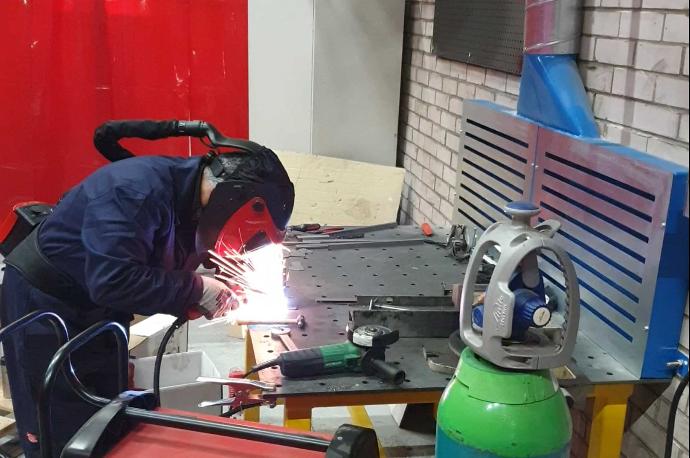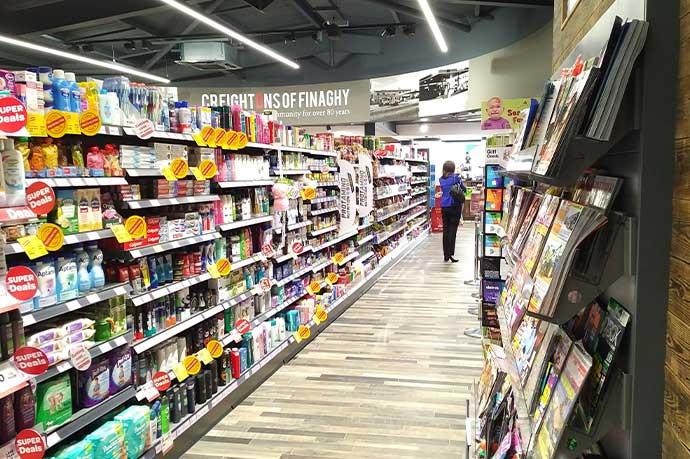Food Retail Display Solutions: UK design and manufacture
The transformation of food retail spaces hinges on the quality and versatility of their display solutions. In a sector where visual impact, operational efficiency, and brand identity intersect, the right food retail display solutions become a strategic asset—shaping shopper journeys, driving sales, and reinforcing a retailer's reputation for innovation and reliability. With the UK grocery retail market projected to expand by USD 56.2–56.4 billion between 2024 and 2029 at a compound annual growth rate of 3.8%–3.9%, retailers face both opportunity and pressure to optimize their in-store environments.
Understanding Food Retail Display Solutions
Food retail display solutions are the backbone of any successful grocery, convenience, or specialty food store. These systems not only organise products attractively but also guide customer flow, encourage impulse purchases, and ensure every item is easy to find and access. A well-designed display balances aesthetic appeal with everyday practicality, providing the flexibility to adapt to changing product ranges, seasonal promotions, or evolving consumer preferences.
Recent market dynamics underscore this importance. While supermarket till sales rose by 5.3% year-on-year in January 2025, food store volumes fell by 5.0% in May, highlighting the volatility retailers must navigate through strategic display decisions.
UK-based manufacturers, such as CAEM, have set the benchmark for quality, customisability, and durability. By designing and manufacturing all shelving and shopfitting systems in-house, CAEM ensures total control over product quality, lead times, and customisation options. Their collaborative approach—combining in-depth consultation, advanced 3D design, and rapid prototyping—means every solution is tailored to the retailer's unique needs, whether for farm shops, supermarkets, or specialist delis.
Types of Food Retail Display Solutions
Modern food retailers can choose from a comprehensive portfolio of display options, each engineered for specific merchandising goals. Gondola shelving systems, like CAEM's TN9, offer modularity and adaptability, making them ideal for supermarkets and grocery stores seeking to optimise floor space and streamline aisles. Wall-mounted displays, such as the S50 system, are designed to maximise vertical real estate, freeing up valuable floor area while maintaining a clean, organised look.
Freestanding display units, exemplified by CAEM's M25 system, create dynamic focal points for promotions or new product launches, thanks to features like ultra-low bases and slimline shelves. Storage racking and boltless shelving—such as UNIZINC—address the back-of-house need for robust, high-density stock organisation and rapid replenishment.
Beyond these core solutions, retailers benefit from countertop displays for impulse buys, end-cap displays to highlight seasonal offers, and bespoke fixtures crafted to reinforce brand identity or accommodate unique store layouts. The breadth of options reflects the importance of flexibility; with modular and reconfigurable systems, displays can evolve in tandem with changing product assortments or marketing campaigns.
Refrigerated Display Cases
No food retail environment is complete without refrigerated display cases, which safeguard the freshness and safety of perishable items such as dairy, meat, and prepared foods. These cases are meticulously engineered for optimal visibility, consistent temperature control, and easy access—supporting both product integrity and compelling presentation. Increasingly popular are plug-in refrigeration units, prized for their portability and adaptability. Retailers use these to swiftly respond to trends, promote fresh and vegan ranges, and manage dynamic merchandising driven by social media and seasonality. In all cases, hygiene and ease of cleaning remain paramount, ensuring compliance with food safety standards while presenting products at their best.
Proven Success Stories: Case Studies in Display Innovation
The impact of strategic display solutions becomes clear through real-world implementations across UK retail environments. Major supermarkets have revolutionized their approach through flexible, modular refrigeration units strategically placed near complementary products. Placing small refrigerators with mozzarella next to fresh tomatoes or prepared basil creates powerful cross-category impulse buying opportunities, with noticeable uplifts in basket values and composition diversity reported since 2023.
Select UK supermarkets have transformed traditional aisles into lifestyle-focused layouts, integrating dining options like sushi bars and vegan meal counters with grocery displays. These destination-style environments drive longer visit times and demonstrate how European chains achieve up to 15% increases in basket size post-implementation. The upgraded display cabinets supporting these concepts show payback periods under 18 months, proving their commercial viability.
Specialty food retailers adopting vertical and stacked display cabinets have maximized product visibility while minimizing floor space usage. These configurations deliver sales increases of 10-20% for newly featured items while improving space efficiency by up to 30% compared to traditional flat displays.
Digital integration represents the cutting edge of display innovation. UK retailers deploying beacon technology and interactive displays report campaign-linked uplifts of 12-18% in targeted product lines during activation periods. This data-driven approach enables precise measurement and optimization, yielding positive ROI by reducing overstock and targeting promotions more accurately.
Overcoming Implementation Challenges
While display solutions offer significant benefits, successful implementation requires navigating common challenges. Space constraints in existing stores often limit configuration options, requiring careful measurement and creative solutions to maximize utility without disrupting operations. Budget considerations can create tension between ideal solutions and practical limitations, making phased rollouts and modular systems particularly valuable.
Staff training represents another crucial factor. New display systems require team members to understand assembly, maintenance, and optimization techniques. Retailers benefit from choosing manufacturers who provide comprehensive training and ongoing support throughout the implementation process.
Supplier coordination becomes complex during major refits, especially when integrating new displays with existing infrastructure. Working with manufacturers who offer project management services and maintain strong relationships with complementary suppliers helps streamline these challenges.
Regulatory compliance adds another layer of complexity, particularly for food-contact surfaces and accessibility requirements. Partnering with experienced manufacturers familiar with UK retail standards ensures displays meet all necessary certifications from the outset.
Features to Consider When Choosing Display Solutions
Selecting the right food retail display solution involves balancing a complex array of criteria. Durability and build quality are non-negotiable, especially for displays that must withstand high footfall and heavy use. Flexibility is equally vital—modular systems like CAEM's S50 can be quickly reconfigured for new lines or seasonal changes, future-proofing the store against shifting demands.
Visual appeal and brand alignment are central considerations; custom colour and finish options allow retailers to reinforce their identity and enhance the shopping environment. Practical features—adjustable shelving, easy-to-clean surfaces, and ergonomic layouts—streamline daily operations and maintenance.
Material selection plays a dual role, affecting both aesthetics and sustainability. Eco-friendly finishes, recycled materials, and energy-efficient technologies support environmental goals and resonate with today's consumers. Accessibility and space optimisation ensure every square metre is used efficiently, crucial in compact urban formats. Integration of accessories—slat panels, wire baskets, LED lighting—further elevates functionality and presentation, while security features and compliance with food safety regulations round out the checklist.
For retailers seeking rapid rollouts or phased upgrades, compatibility with existing systems and reliable supply are critical. CAEM's universal 50mm upright slot system, automated UK manufacturing, and stock holding capabilities guarantee swift delivery and seamless integration.
Best Practices for Optimising Food Retail Displays
Optimising in store displays is both an art and a science. Strategic placement of merchandising displays—such as end caps, central islands, and impulse zones—maximises visibility and stimulates additional purchases. Layering products at varying heights, using tiered arrangements, and regularly refreshing displays keep the shopping experience engaging and encourage exploration.
Consumer behavior shifts significantly impact display effectiveness. The rise of scratch cooking as a cost-saving measure has prompted retailers to highlight fresh produce and meal solution bundles more prominently. Value-conscious shoppers increasingly seek deals, making promotional displays and end caps more critical for driving traffic and sales.
Consistency in layout and signage aids navigation and supports brand recognition. Clear, well-positioned price labels help shoppers make quick decisions, while regular cleaning and organisation maintain a professional atmosphere that builds trust.
Lighting is another powerful tool, highlighting high-margin products and setting the overall mood. Incorporating tactile materials and natural finishes can create a warm, inviting ambience—especially effective in farm shops or delicatessens.
Leveraging planograms and sales analytics enables retailers to place bestsellers in high-traffic 'hot zones' at eye level, driving conversions. Cross-merchandising—grouping complementary products—encourages higher basket sizes, while digital signage delivers targeted promotions and real-time updates. These practices have tangible results; a leading UK grocery chain's integrated display strategy delivered 28 million campaign impressions, a 4:1 return on investment, and £1 million in incremental annual sales, demonstrating the value of coordinated display optimisation.
Innovative Trends and Future Outlook in Food Retail Displays
The landscape of food retail display solutions is rapidly evolving. The UK Point-of-Purchase (PoP) display market is projected to grow from USD 640.90 million in 2023 to USD 1,436.20 million by 2032, reflecting robust demand for engaging and flexible in store displays. Five key market drivers are reshaping the sector: AI-driven solutions for dynamic displays, demand for convenience and on-the-go options, digital transformation integrating mobile commerce, inflation-driven value-seeking behaviors, and growing interest in plant-based and sustainable products.
Digital technologies are reshaping the sector. The adoption of AI-enabled and digital shelf displays is accelerating, offering real-time pricing, stock monitoring, and personalised promotions. 65% of UK food and retail businesses are using AI in their operations as of 2024, with nearly half having a formal AI strategy. These innovations, including IoT-integrated smart shelving, digital signage, and electronic shelf labels, bridge the gap between online and physical retail, supporting omnichannel experiences and driving operational efficiency.
Customisation and personalisation are gaining momentum, with retailers seeking to differentiate through bespoke displays and co-branded fixtures. Modular, reconfigurable designs support agility—allowing rapid adaptation to new trends, products, or campaigns—while minimalist aesthetics and phygital elements (such as QR codes and AR) enhance storytelling and shopper engagement.
CAEM remains at the forefront of these trends, integrating sustainable manufacturing, advanced automation, and smart technology into every solution. Our commitment to UK-based production, rapid lead times, and continuous innovation positions us as a trusted partner for retailers aiming to create efficient, sustainable, and future-ready environments.
Sustainability Standards and Environmental Leadership
Materials matter—not just for appearance and durability, but for their environmental impact. Leading UK manufacturers are achieving measurable sustainability improvements through verified certifications and transparent metrics. B Corp certification recognizes companies meeting high standards of social and environmental performance, with manufacturers like Arken demonstrating this commitment to balancing commercial objectives with environmental responsibility.
Key environmental standards now include ISO 14001 certification for systematic environmental management, Forest Stewardship Council (FSC) Chain of Custody certification for responsible wood sourcing, and EcoVadis Gold ratings placing companies in the top 5% globally for sustainability commitment. The Carbon Trust Standard and CarbonNeutral® certification validate measurable carbon footprint reductions and net-zero achievements.
Additional certifications like Sedex membership for ethical supply chains and On Pack Recycling Labels (OPRL) for recyclability communication demonstrate comprehensive sustainability approaches. These standards require manufacturers to provide evidence of year-on-year reductions in operational and product carbon footprints, extensive use of recyclable materials, and transparent sustainable procurement practices.
Local sourcing and ethical production are priorities for UK manufacturers. At CAEM, we have reduced plastic consumption by 80%, offset thousands of tonnes of CO2, and employ solar panels and energy-efficient processes to further reduce our environmental footprint. Our ISO9001:2005 certification underlines our commitment to continuous improvement, quality, and sustainability.
Retailers increasingly favour eco-friendly materials, including sustainably sourced wood, recycled plastics, and low-emission composites. The use of durable, long-lasting components minimises waste and aligns with circular economy principles. Non-toxic finishes and food-safe surfaces are essential for displays in direct contact with unpackaged foods, while lightweight and recyclable parts make installation, transport, and eventual recycling more efficient.
In a market defined by rapid change and growing expectations, food retail display solutions are more than just fixtures—they are a foundation for success. Through modularity, innovation, and a deep understanding of retail challenges, CAEM delivers display stands manufacturers' expertise, helping retailers across the UK and beyond create engaging, efficient, and future-proofed stores. Whether you are seeking standard shelving or a fully bespoke retail display solution, the key lies in choosing a partner who combines engineering excellence with a collaborative, client-centric approach—ensuring every display not only meets today's needs, but is ready for tomorrow's opportunities.





